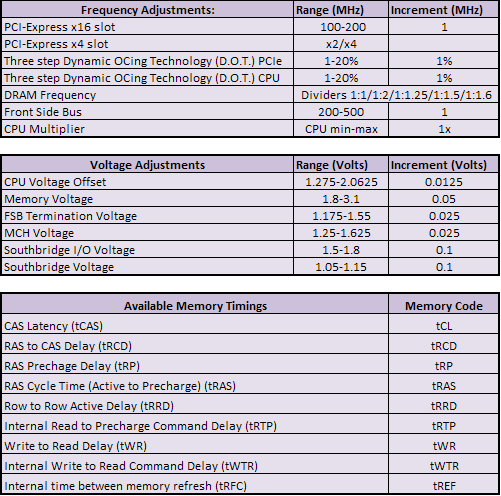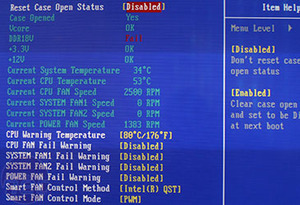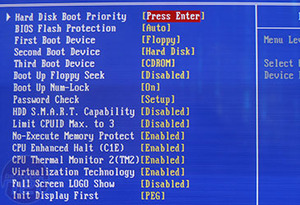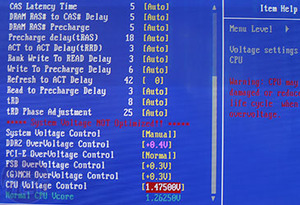Rear I/O
At a first glance, the Rear I/O may seem full but it is actually pretty limited, where only four of the twelve USB 2.0 ports are provided here. Ideally the two USB ports on their own would have another two on top, providing six on the rear I/O.Legacy connectivity from parallel and RS232 serial ports are still supplied, obviously there's still some demand for these in sectors outside of the consumer realm where nothing significant is sold using these connections.
Gigabyte has given both analogue and digital audio outputs with both optical and coaxial S/PDIF to the right of the PS2 ports and at the other end there are six 3.5mm audio jacks providing 7.1 channel surround sound.
Finally the single RJ45 Gigabit Ethernet socket is placed above one of the sets of two USB ports next to the audio connectors.
No eSATA or Firewire ports are present, as Gigabyte has chosen not to include these on this budget board (of course, there is an eSATA extender in the bundle - Ed).

BIOS





After you remember the annoying hidden Ctrl+F1 shortcut that releases the extra advanced settings, there's plenty to play with in the P35-DS3R's BIOS. Gigabyte offers a wide variety of memory timings without losing too many people in pages and pages of adjustments. Some of the voltage options are a little tame, with no southbridge adjustments and limited MCH/FSB limits, but given the size of the heatsinks this is hardly surprising. However, memory gets a healthy 2.5V maximum but using the CPU at its limit of 2.0V will eventually get you a padded room and a nice white coat to hug yourself all day.
While not unlinked, there are still plenty of memory ratios to play with although the "2.0 = 1:1 sync" can be a little confusing. If you're an overclocking novice, C.I.A.2 allows you to set progressive auto-overclocking from either "Cruise", "Sports", "Racing", "Turbo" or "Full Throttle".
Overall, despite being inexpensive it still has enough to keep a moderate enthusiast happy, but if you spend all day eeking the absolute limits out of your hardware, you've obviously got to invest in a more expensive motherboard.

MSI MPG Velox 100R Chassis Review
October 14 2021 | 15:04









Want to comment? Please log in.